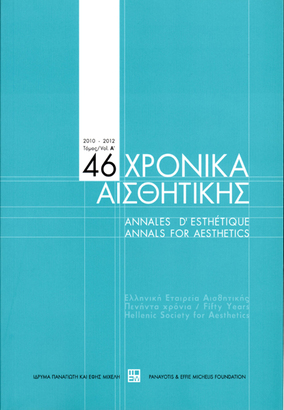Το παράδοξο της πολεοδομικής αισθητικής στην τεχνολογική κοινωνία
Part of : Χρονικά αισθητικής : ετήσιον δελτίον της Ελληνικής Εταιρείας Αισθητικής ; Vol.Η, No.1, 1969, pages 148-161
Issue:
Pages:
148-161
Parallel Title:
The Paradox of Urban Aesthetics in Technological Society
Author:
Abstract:
Our society has become artistically affluent with a plethora of artists and places for the performance and preservation of art works, on the one hand, and a widespread dissatisfaction with the conditions of urban life that compromise the quality of everyday life and experience. The result is that the problem of the aesthetics of environmental design and comprehensive urban reconstruction emerges as the foremost issue of social art and reform.On the assumption that we can view the city as an art work, this paper undertakes to identify the factors that function aesthetically in order for the city to embody the determining features of works of art, and the attitudes that are fundamental to effecting and maintaining the aesthetic character of the city. Essential to our inquiry is the proposal to view the city as a case of purposive organization of human and natural materials. Being an outcome of human techne, the city functions at once as container and contained, i.e., as both the outcome of art and the matrix art. The paradox of urban aesthetics is defined as a situation where (i) the city as container of art works testifies to an abundance of artistic goods and technological efficiency necessary for the elimination of urban ugliness and plight, but (ii) the modern city as a contained complex totality of men and institutions appears defective in the requisite considerations for its aesthetic form.Despite the revolutionary character of modern art and the growing concern for the arts, contemporary society has yet to bridge the gap between aesthetic needs and technology. Two conflicting attitudes seem responsible for this persisting discrepancy : (a) the attitude that acknowledges the goodness and usefulness of the arts in private enjoyment, education and public celebration; and (b) the attitude which objects to granting the artistic dimension of man a high place in the business of social planning, policy making in governmental affairs and urban problems.An examination of the social dynamics that sustain this discrepancy reveals the operative force of two basic factors : (1) The unequal distribution of social and political power, backed by a steady output of technological advancements, which in turn has legislated ways to maintain a designed disequilibrium in institutional priorities. (2) The presence of an ideological factor built on the assumption of the primacy of the politicoeconomic concerns and which proved to be inherently incapable of removing the discrepancy between art values and technics. This ideology, being a conservative mechanism, has failed to anticipate the axiological anomalies that were generated from the mishandling of technological applications. The paper concludes with certain observations on the role that the social sciences must play in order to attain better solutions than the ones now in operation.
Subject:




